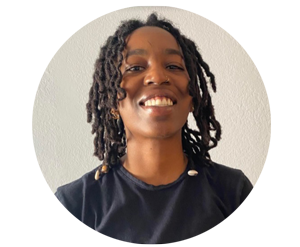All conflict at work starts with one issue: communication. Luckily, the issue can also be its own solution with a little effort. Conflict is not inherently negative. Conflict is actually a necessary part of growth and change. As individuals, we will naturally have thoughts, feelings, and values that differ from those around us. These differences can make it difficult to understand and relate to each other causing interpersonal conflict from the time we’re kids on the playground to adults in the office.
Causes of Conflict in the Workplace
While making friends on the job is exciting, most work relationships are professional, not personal. We are less likely to feel comfortable communicating our feelings to people we don’t know well, and this tends to lead to resentment. Most human action is driven by emotion, and we do ourselves a great disservice by failing to acknowledge it. There is a common misconception that communicating our feelings is unprofessional and that feelings should be left out of work. That is simply impossible. When we don’t speak up when we feel wronged, those negative feelings fester and lead to volatile relationships that negatively impact the work environment later.
Conflict at Work – Example Scenario 1:
Shay is a new hire at Big Bucks Bank. Her manager, Teresa, has worked at the bank for several years and prides herself in getting to know everyone in the company. Shay is more reserved and stays to herself, but she consistently builds new client relationships. Others in the office take note of this and interact with Shay accordingly. Teresa decides to ask Shay to lunch at the cafe and emails Shay an invitation. However, Shay does not receive the email, so she does not attend the lunch. Teresa waits for Shay in the café feeling embarrassed and rejected when Shay doesn’t show. Assuming Shay stood her up intentionally, Teresa now has negative feelings about Shay as a person. She becomes harsher in her criticism of Shay’s work and shows less enthusiasm for her ideas. She is slower to approve Shay’s time-off requests and even makes mean comments about Shay’s personality in the break room.
What Went Wrong?
Communication! By assuming that Shay intentionally insulted her, Teresa missed an opportunity to speak directly to Shay and hear her reason for missing lunch.
Conflict at Work – Example Scenario 2:
Lionel has recently been promoted to a senior writer position on his team. He is now responsible for quality-checking the work of newer writers before publishing. During a team Zoom meeting, Lionel’s manager, Rhonda, mentions that she’s noticed more writing errors coming through this week. She comments that the senior writer is expected to take care of these before they reach her. Lionel feels targeted by Rhonda’s comments after being called out in front of the team, especially since there was only one error. This is the third time Rhonda has indirectly critiqued Lionel’s work in meetings. Lionel decides he wants to move to a new team.
What Went Wrong?
This situation is slightly hairier than the last, as it requires an associate to critique his superior’s management style and hope she will listen. However, if the company culture welcomes openness and communication, Lionel should feel empowered to express his feelings to Rhonda.
Scenario 2 With Better Communication
Instead of switching teams, Lionel decides to speak with Rhonda in private. He expresses that what she said in the meeting embarrassed him, as everyone knows his responsibilities as the senior writer and could assume she was talking about him. Rhonda is sympathetic. She explains that she only meant to instruct the entire team to watch for errors and did not wish to call anyone out directly. Rhonda apologizes for hurting Lionel’s feelings and agrees to give him feedback directly and privately.
Conclusion
These types of interactions are all too common in the workplace, but they can be mitigated by asking and listening to each other’s perspectives. By acknowledging each other’s feelings, we can strengthen our work relationships and focus our energy on producing good work — therefore, avoiding potential workplace conflict.

By Kendra McFadden | Content Writer
Baltimore-native Kendra McFadden is a graduate of Morgan State University where she received a B.S. in Business Information Systems. She has written in various industries including finance and real estate before turning her eye to marketing and film. She is currently working as a content writer in the IFS Marketing department contributing to the DEI&B Culture Book Diversity Dive series.








